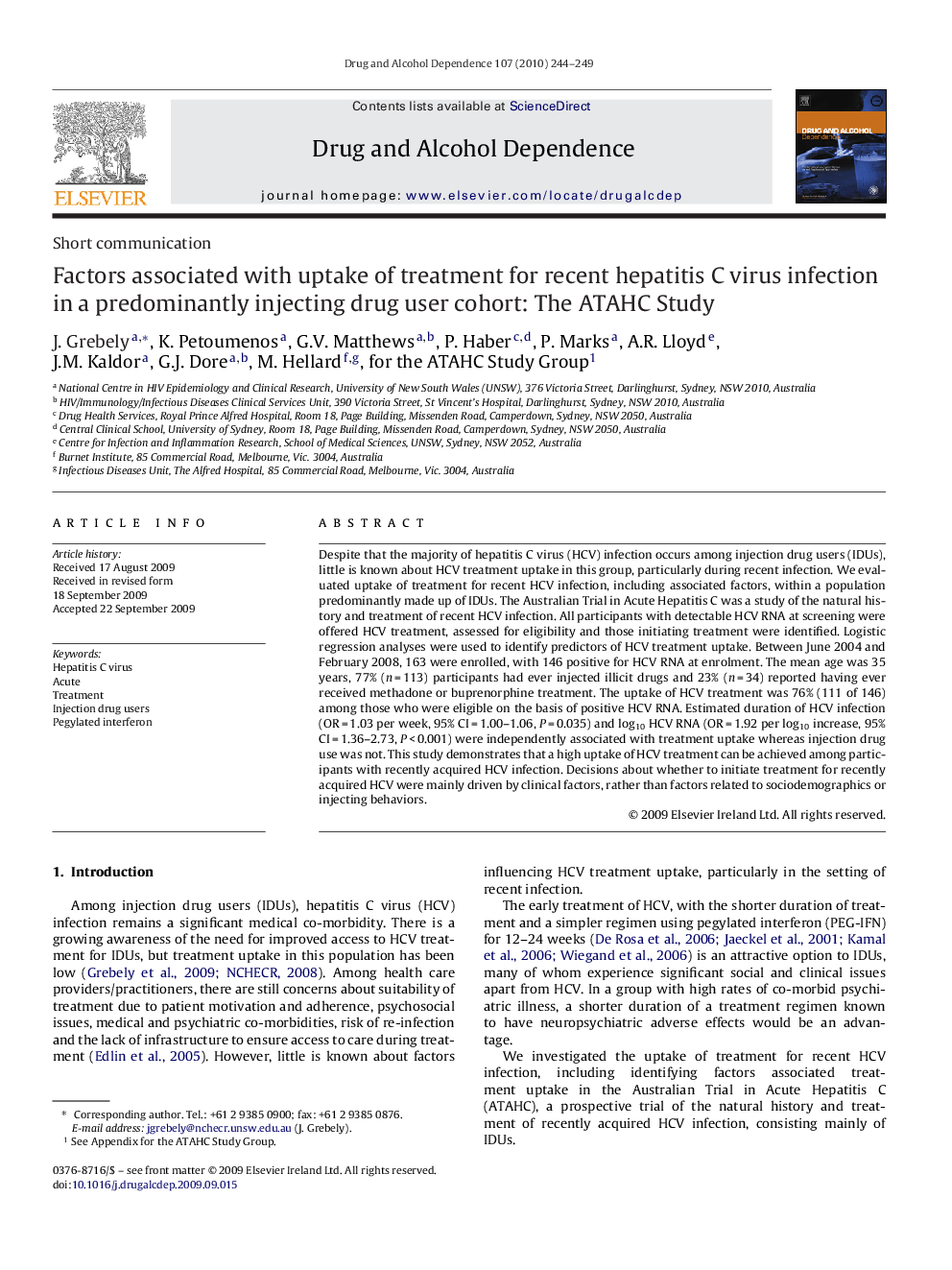| Article ID | Journal | Published Year | Pages | File Type |
|---|---|---|---|---|
| 1070481 | Drug and Alcohol Dependence | 2010 | 6 Pages |
Despite that the majority of hepatitis C virus (HCV) infection occurs among injection drug users (IDUs), little is known about HCV treatment uptake in this group, particularly during recent infection. We evaluated uptake of treatment for recent HCV infection, including associated factors, within a population predominantly made up of IDUs. The Australian Trial in Acute Hepatitis C was a study of the natural history and treatment of recent HCV infection. All participants with detectable HCV RNA at screening were offered HCV treatment, assessed for eligibility and those initiating treatment were identified. Logistic regression analyses were used to identify predictors of HCV treatment uptake. Between June 2004 and February 2008, 163 were enrolled, with 146 positive for HCV RNA at enrolment. The mean age was 35 years, 77% (n = 113) participants had ever injected illicit drugs and 23% (n = 34) reported having ever received methadone or buprenorphine treatment. The uptake of HCV treatment was 76% (111 of 146) among those who were eligible on the basis of positive HCV RNA. Estimated duration of HCV infection (OR = 1.03 per week, 95% CI = 1.00–1.06, P = 0.035) and log10 HCV RNA (OR = 1.92 per log10 increase, 95% CI = 1.36–2.73, P < 0.001) were independently associated with treatment uptake whereas injection drug use was not. This study demonstrates that a high uptake of HCV treatment can be achieved among participants with recently acquired HCV infection. Decisions about whether to initiate treatment for recently acquired HCV were mainly driven by clinical factors, rather than factors related to sociodemographics or injecting behaviors.
